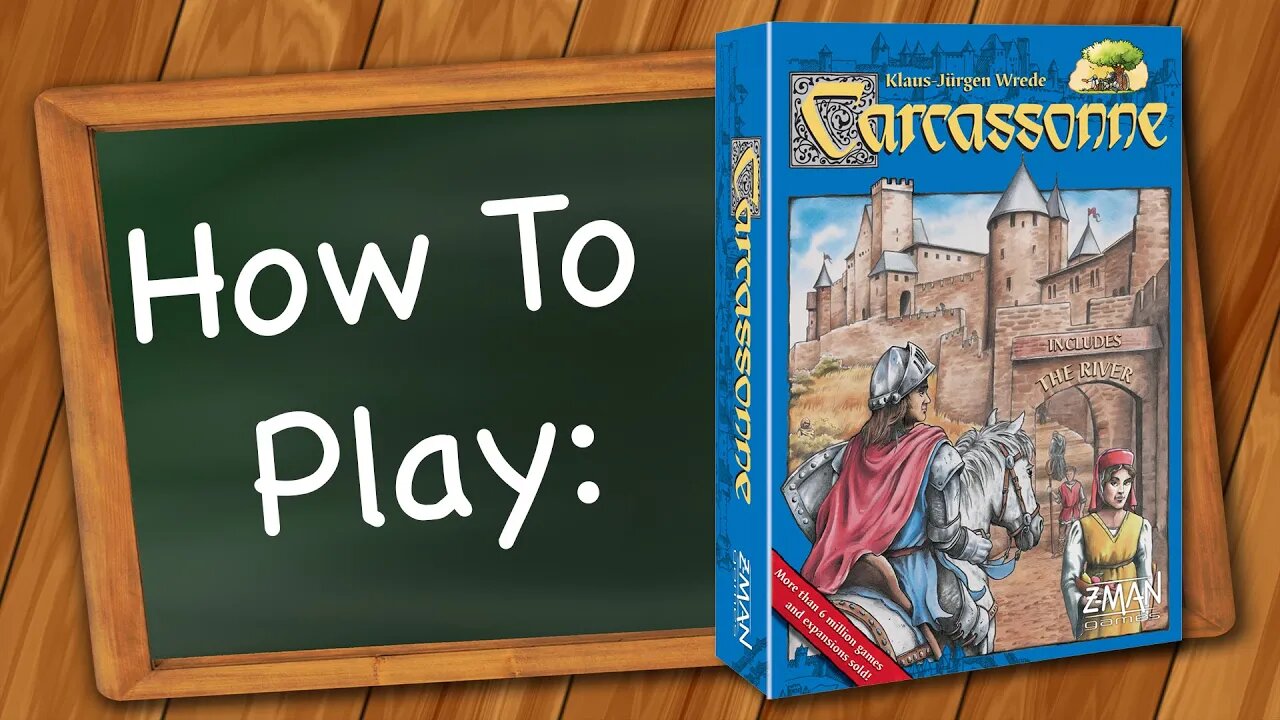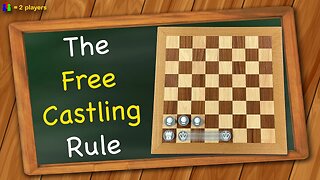Premium Only Content

How to play Carcassonne
Learn the rules to the board game Carcassonne quickly and concisely - This visually rich video has no distractions, just the rules.
Don't own the game?
Buy it here: https://amzn.to/2EFy8OB (This Amazon Affiliate link directly supports me)
RULES:
On your turn you draw 1 land tile and place it next to any adjacent tile already in play. You may not place it kitty-corner. There are 4 types of segments that appear on tiles: Roads, Fields, cloisters, and city segments. Within Road segments there are crossings that break up road segments. The placed tiles must fit all existing segments of all adjacent tiles. Roads continue with roads, cities with cities, fields with fields. The cloister is complete all by itself.
In the rare case that a drawn tile cannot legally be played anywhere, and all players agree, discard it to the box and draw a new tile and continue your turn. After a player places a land tile, they may deploy a follower. You may only play 1 follower per turn. That follower must come from your supply. You may only deploy it to the tile you just placed.
Followers can be deployed in one of 4 ways: As a knight: place the follower standing upright in a city segment. As a thief: place the follower standing on a road. As a farmer: place the follower on its side on a field segment. Or as a Monk: Place the follower standing in a cloister.
You may not deploy a follower on a segment that connects to another segment on another tile, no matter how far away, that already has a follower on it. You don’t have to place a follower if you don’t want to. If you don’t have any more followers, you just place the tile and move to the final action of your turn.
If after placing a tile and a follower, if you choose, you may score points for completed segments. A road is complete when the road segments on both ends connect to a crossing, a city segment, a cloister, or when the road forms a complete loop. The player with the most thieves on a completed road segment scores 1 point for each tile in the completed road. Separate segments on a tile count just once. [see visual in rules] If two or more players all have the same number of thieves, then all tied players score maximum points. Remove all thieves from the completed road and return them to their owner’s supply. At the end of the game, incomplete road tiles count for 1 point each.
A city is complete when the city is completely surrounded by a city wall and there are no gaps in the wall. The player with the most knights in that city score 2 points for each tile in the completed city and 2 bonus points for each pennant, which is the small blue and white shield symbol. If two or more players all have the same number of knights, then all tied players score maximum points. Remove all knights from the completed city and return them to their owner’s supply. At the end of the game, incomplete city tiles and pennants count for 1 point each.
A cloister is complete when the 8 spaces surrounding the cloister have a tile in them. The player with a monk in a completed cloister scores 9 points, 1 point for each tile...
Only after a segment is scored do you remove the followers from play and return them to player’s supplies. The returned followers may be used again in any segment their owner wishes. It is possible for a player to deploy a follower and score a road, city, or cloister and then have that follower returned all on the same turn.
When scoring, move that player’s score marker forward on the scoring track that many spaces. If your score marker exceeds 50, lay your marker on its side to indicate you’ve surpassed 50 and continue around the track again.
Connected field segments are called farms. Farms only score at the end of the game. Farmers remain in the field segments where they are deployed the entire game and are never returned to their owner’s supply. To emphasize this, farmers are placed on their side. Farms are bordered by roads, cities, and the edge of the area where the land tiles have been played.
The game ends at the end of the player’s turn who places the last land tile. Only completed cities are used for scoring farmers, the size of the city is irrelevant. The farmer must be in a farm that borders a city to supply it. The distance of the farmer is unimportant. It is possible for multiple players to have a farmer or many farmers in the same farm. If this is the case, only the player with the most farmers in the farm controls the farm, if it is a tie for the most farmers, then all tied players control the farm.
For each city supplied by a farm, the player who controls the farm earns 4 points. A farm can supply and score several bordering cities. Several farms can supply a single city. When this happens, the player with the most farmers in the farms supplying the city earns the 4 points. If two or more players tie with the most farmers, each of those tied players earns 4 points.
-
 0:32
0:32
Triple S Games
1 year ago $0.01 earnedThe Free Castling Rule
303 -
 13:24
13:24
davej007
3 years agoDriving in Carcassonne
29 -
 3:34
3:34
Triple S Games
2 years ago $0.01 earnedHow to play Ginnykub
160 -
 0:28
0:28
Triple S Games
2 years agoHow to play Heardle
19 -
 0:44
0:44
Triple S Games
2 years agoHow to play Hippodrome
21 -
 0:34
0:34
Triple S Games
2 years ago $0.02 earnedHow to play Nerdle
42 -
 0:43
0:43
Triple S Games
2 years ago $0.01 earnedHow to play Microchess
16 -
 4:47
4:47
GuitarControl
2 years agoHow To Play Shred Guitar Sequences
501 -
 DVR
DVR
Alex Zedra
4 hours agoLIVE! VERDANSK!!!!!
48.7K3 -
 LIVE
LIVE
SpartakusLIVE
14 hours ago24 HOUR STREAM w/ The MACHINE on Verdansk
1,255 watching